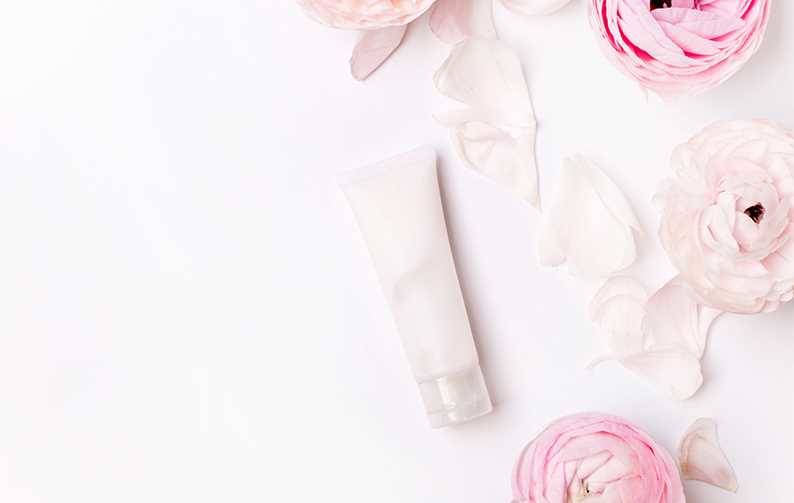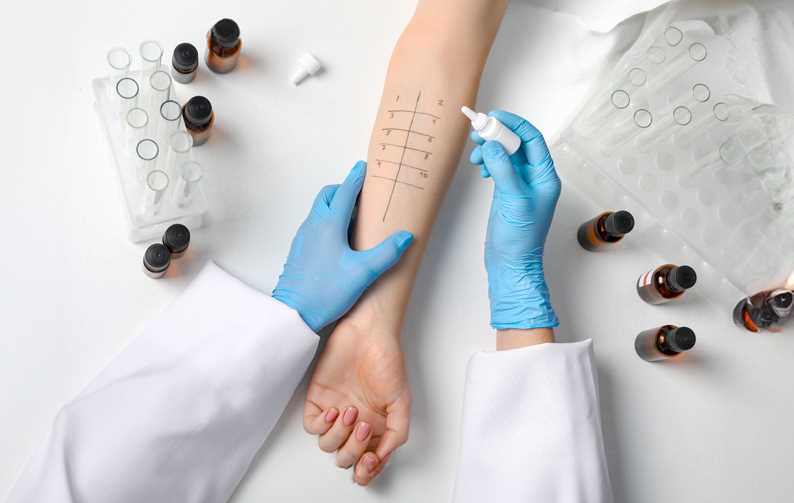HRIPT Study
Ensuring safety in cosmetic products

HRIPT (Human Repeat Insult Patch Test) is a well-established dermatological assessment method used to identify potential skin irritation and sensitization reactions caused by products applied directly to the skin. This test is crucial to ensure that cosmetics, personal care products and other topical items do not cause adverse reactions in users, and is an indispensable tool in certifying the safety of these products.
Main types of reactions assessed
Throughout the HRIPT process, two main types of reactions are observed: irritation and sensitization.
• Primary Irritation: It is a response that manifests itself in a short time after we have the first contact of the product with the skin. The irritation is usually localized and disappears quickly after the causative agent is removed. The primary irritation study at HRIPT is a preliminary analysis of the base formulation, providing a quick overview of the skin's initial reaction to the product, usually within a week. However, it is not suitable for products with a high potential for irritation, such as sunscreens or astringents, which need more specific studies.
• Accumulated Irritation: Assess the potential of a product to cause irritation or uses repeated applications over time. This type of test is especially relevant for cosmetics such as face creams or hair treatments, which are used daily and can, over time, generate adverse reactions. Accumulated irritation is important to prove product claims, as in the case of anti-aging products with active ingredients such as retinol.
• Sensitization: Refers to an allergic reaction, which involves immunological mechanisms, i.e. it is a response that will appear after a stage of repeated contact with the product, then a period without contact with the product and then again a new one-off contact with the product. In this case, the response is systemic and occurs even after the product is removed from the skin, and can last longer. The sensitization process is compared to the mechanism of action of a vaccine: after the first contact, the body “memorizes” the product and, in subsequent contacts, a more severe allergic reaction can occur.
HRIPT methodology
HRIPT is conducted with a group of volunteers. During the study, which involves immunological mechanisms, i.e. it is a response that will appear after a stage of repeated contact with the product, then a period without contact with the product and then again a new one-off contact with the product., in repeated sessions over a period that can last up to six weeks.
The study involves three main phases:
1. Induction Phase: The product is applied repeatedly to the subjects' skin for a pre-defined period of time.
2. Rest Phase: After the induction phase, subjects stay for a period of approximately two weeks without having contact with the product, that is, during this period the applications are suspended.
3. Challenge Phase: After the rest period, the product is reapplied to a new site on the subject's back in order to verify sensitization responses.
The ultimate goal of HRIPT is to identify any potential for irritation or sensitization before the product is released to the market. In the case of products considered hypoallergenic, both the HRIPT and photosensitization (which includes controlled exposure to solar radiation) are required to obtain regulatory approval in markets such as Brazil, under ANVISA rules.
The importance of safety certification
For a product to be marketed with the claim of "hypoallergenic", It needs to go through the 02 sensitization + photosensitization studies, ensuring that it is safe for people with different skin types, including the most sensitive. The ALS portfolio covers tests that not only guarantee dermatological safety, but also comply with international regulations, allowing manufacturers to launch products with well-founded claims.
Compatibility tests on sensitive skin are a differential of ALS, using panels with self-declared subjects with sensitive skin, which provides a more complete and assertive assessment of the products. These studies are often requested by sponsors concerned with ensuring the safety and efficacy of their products for this specific audience.
Reporting flexibility
A key feature of HRIPT studies conducted by ALS is the possibility to issue partial reports throughout the study. This allows sponsors to closely monitor the performance of the product being tested, adjusting formulations, if necessary, without having to wait until the study is completely over.
Final Considerations
HRIPT is an essential test to validate the safety of topical products, ensuring that they do not cause adverse reactions in different skin types. Conducting these studies demonstrates manufacturers' commitment to the safety and efficacy of their products, contributing to consumer confidence and compliance with safety regulations. ALS, a leader in laboratory analysis, is a reference in this type of test, providing robust and highly reliable results for the cosmetics and personal care products market.
Cosmetic manufacturers looking to ensure the safety and market acceptance of their products need to consider HRIPT as an essential part of their development strategy. This test, alongside other sensory and compatibility analyses, not only protects the end consumer, but also upholds safety and hypoallergenicity claims, differentiating high-quality products in the competitive beauty and personal care sector.
Final considerations
HRIPT is an essential test to validate the safety of topical products, ensuring that they do not cause adverse reactions in different skin types. Conducting these studies demonstrates manufacturers' commitment to the safety and efficacy of their products, contributing to consumer confidence and compliance with safety regulations. ALS, a leader in laboratory analysis, is a reference in this type of test, providing robust and highly reliable results for the cosmetics and personal care products market.
Cosmetic manufacturers looking to ensure the safety of their products need to consider HRIPT as an essential part of their development strategy. This test, alongside other sensory and compatibility analyses, not only protects the end consumer, but also upholds safety and hypoallergenicity claims, differentiating high-quality products in the competitive beauty and personal care sector.



















































